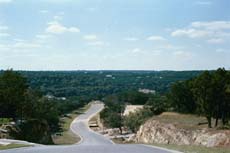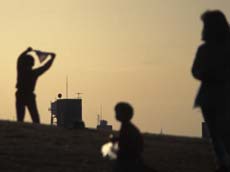index
The importance of horizons
click on images for full-size:





Physical horizons

Horizons beyond set paths

Wider possibilities for action and being

Uncontrolled extension
What something is revealed to be, what it means, depends on the horizon of possibilities (actions, inferences, things it might have been or done, etc.) within which it stands in contrasts. Explicit hypertext links are part of that standing within the horizon, but the items a text chunk or a region of a place are linked to are surrounded by more than explicit links. We can distinguish a variety of horizons for a thing, for a text, for a hypertext, for a suburban building, or for part of any place:
- items the thing or place or textual fragment is linked to explicitly (the factory in the next town, the head bank, the vacation home, other parts of a machine, matching items (for instance, tables with chairs), grammatical connections, explicit textual references, and so on).
- the horizon visible behind these closely linked items. In places this is still mostly the result of design (the wall of the room, the houses on the block, the tall buildings visible in the background).
- "farther out": the phenomenological horizon that is not a visible object linked to, since it is composed of absences set by normative rules of possibility (the set of rooms the house might also have contained, possible continuations for the narratives normative in the place).
- the wilder possibilities that are not according to rules, that break or bend or defy rules (strange twistings of what the house or the narrative might become).
- nearby adjacencies, not necessarily designed for contrast but standing in contrasts that will influence meaning and affect function (the other books on the table, the neighbors who inhabit the nearby houses).
All these help constitute the contour of meaning surrounding this text or this place or this action, as a relatively definite perspectival construct out of surrounding possibilities. But there are always other possible routes toward wider horizons.